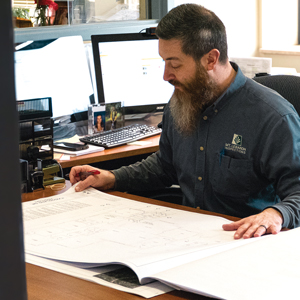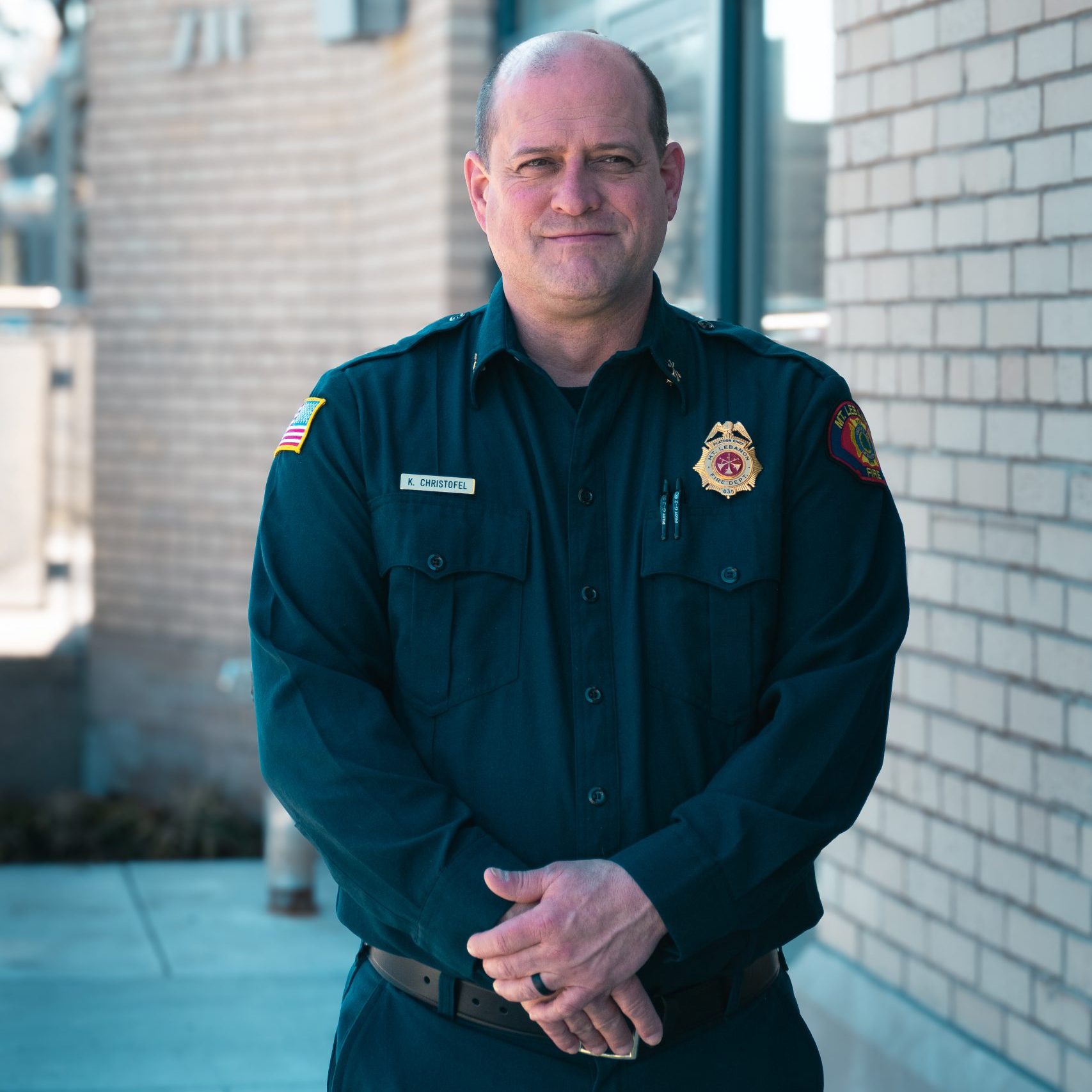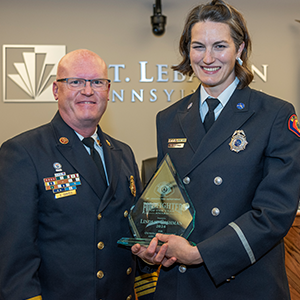Chief McDonough speaks to the senate transportation committee
Testimony on Municipal Use of Radar & Lidar in Pennsylvania
Senate Transportation Committee
August 17, 2010
Presented by: Coleman McDonough Chief Mt. Lebanon Police Department & Retired Lt. Colonel, Pennsylvania State Police
Good afternoon, Mr. Chairman and members of the Committee. My name is Coleman McDonough, and I currently serve as the Chief of Police in the municipality of Mt. Lebanon, a first ring suburb of the City of Pittsburgh. In January 2008, I retired from my position as Deputy Commissioner with the Pennsylvania State Police, after a state police career wherein I became quite familiar with the use of police radar as an effective traffic safety enforcement tool. I want to thank you for the opportunity to testify here today.
As a State Police Trooper, radar was an invaluable tool that allowed me to easily monitor speeding traffic and enforce speeding laws. Because the radar devices were so quickly set up and thus easily mobile, I could move to various locations throughout my patrol zones and create an illusion of heavy police presence. This illusion is a critical factor in effectively establishing deterrence, especially in areas where crash rates are high, or where citizen complaints are common.
Later in my career as a State Police Commander, I was able to assign Troopers to radar details in response to traffic concerns, and the ease of use and portability of radar made for the most efficient use of limited personnel resources.
Mt. Lebanon is a densely populated, pleasant community of approximately 33,000 residents that prides itself on, among many assets, the quality of its schools. We have seven public elementary schools as well as three parochial schools, two middle schools and two high schools, all within the 6 square miles that make up Mt. Lebanon. We also call ourselves a safe walking community, and the school district does not use school buses to transport our kids to these schools. They either walk or they are dropped off by Mom or Dad. Thus, we have a lot of children walking along streets every day, and some of those streets serve as direct commuter routes to and from the City of Pittsburgh from the South Hills area of Allegheny County. These routes cut right through our busy business districts, where kids walking to school mix with residents and senior citizens walking to our businesses and health care providers.
Put it all together, and we have a lot of traffic trying to make its way through a community of vulnerable pedestrians on a roadway network that was not designed to accommodate current volumes of traffic. What this means to the Mt. Lebanon Police is that we take our traffic enforcement responsibilities very seriously.
Because we have a lot of vehicular and pedestrian traffic, currently available enforcement tools aren’t always the most user-friendly or effective means to enforce speeding laws. And in my time as the chief of the Mt. Lebanon police, no public safety issue is more important to our residents than the enforcement of traffic laws, and in particular speeding laws. Currently available enforcement tools work, but they often require more than one officer to set up the equipment, or to remain with a device as security while others chase offenders.
The ability to use Radar and Lidar in my community would enable me to more efficiently utilize available patrol personnel to conduct speed enforcement, without elaborate setup of equipment, and without needing to have more than one officer to ensure the security of speed timing equipment. Radar and Lidar would also give us the ability to conduct speed enforcement on some roadways where speeding problems exist today, but where terrain configuration or other roadway features prevent us from using currently available devices to protect residents at these locations.
In sum, if municipal police were authorized to employ Radar and Lidar, we would have more tools requiring fewer personnel resources. This in turn would lead to greater deterrence, and that would equate to safer driving behaviors. In the end, we would move closer to our ultimate goal of higher levels of voluntary compliance with traffic laws, and safer communities.
After a career with the PA State Police in which I saw radar effectively utilized to promote better driving behaviors and to reduce speeds at targeted locations, quite candidly it is incomprehensible to me that Pennsylvania’s municipal law enforcement officers are not permitted to use these tools to protect our citizens. I have heard some of the arguments; we can’t have police out there using “speed traps” to raise municipal revenues. If the legislature has concerns over some police departments using speed enforcement to raise excessive amounts of revenues, then the enabling legislation can be easily crafted to disincentivize such tactics. Nothing now prevents unprofessional agencies from using currently approved speed enforcement technologies to raise excessive revenues — that we see this so very rarely now points out the fallacy behind this argument, and also points to the professionalism of Pennsylvania’s municipal police agencies.
Let me say that I am extremely proud of my service with the PSP and of the outstanding quality of the men and women I was privileged to serve with in that agency. Now that I am serving as a municipal police chief, I think I am in a pretty good position to compare the level of professionalism in the ranks of municipal police officers to that of Pennsylvania State Troopers.
In Mt. Lebanon, we have 44 sworn officers, each of whom must have a bachelor’s degree to be hired. Of the 44 current MLPD officers, 16 5have Master’s degrees. They all have significant levels of out-service training in a variety of specialized areas, and our department’s policy manual is often sought after by other agencies as an example of modem police professionalism. My point? We’re not much different than the other police departments across this Commonwealth, to include the PA State Police, in terms of the quality, integrity and capabilities of our personnel. Given the trust and grave responsibilities we give to municipal police officers in this Commonwealth, I know of no rational argument to treat these officers differently or to deny them an effective tool to protect our citizens’ safety.
Traffic safety, and speed enforcement in particular, is often treated as a “game” by the public and popular media. “Speed traps,” radar detectors, point reductions at traffic hearings–they are all part of this game we play between those who choose to ignore our traffic laws and those who try to enforce those same laws. It’s a “game” that claims more than 40,000 lives nationally every year, and yet we seem to accept it as the price of doing business in our society.
Recently in Mt. Lebanon, we experienced a tragic event that put the lie to any conceptions that traffic safety is a game. On June 28th, 36 year-old Lisa Styles took her one- year-old and her three-year-old children for a jog while she pushed them along a sidewalk on busy Route 19 in a jogging stroller. A young man in a hurry failed to stop at a stop sign, and Lisa Styles was killed, leaving behind a husband and three young children. And while speeding does not appear to be the causal factor in this tragedy, her death served to point out that even in the most liveable communities, lives can change in an instant when traffic laws are ignored.
Chairman Rafferty and other members of the committee, please help me and my colleagues in municipal policing to prevent future tragedies of this nature. We need every available tool to promote traffic safety. The time to make Radar and Lidar technologies available to municipal law enforcement is at hand. On behalf of the PA Chiefs of Police, I want to thank you again for the opportunity to address your committee, and I’d be happy to try to answer any questions that you may have.





